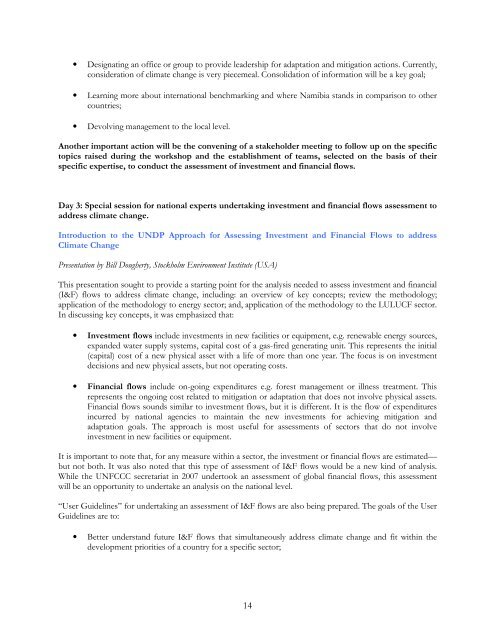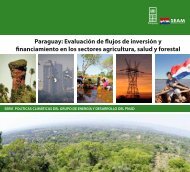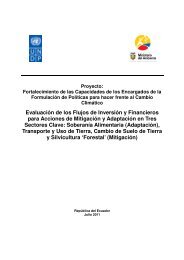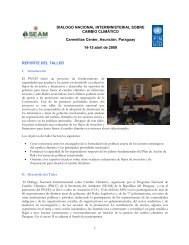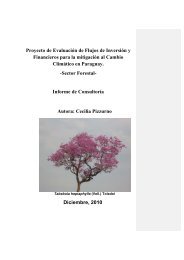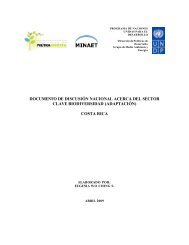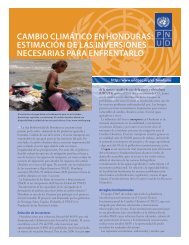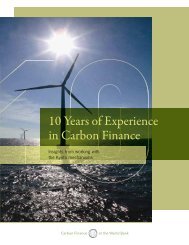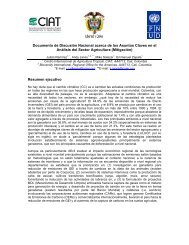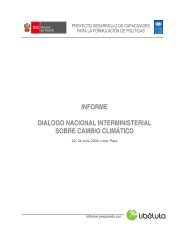national climate change awareness-raising workshop - UNDPCC.org
national climate change awareness-raising workshop - UNDPCC.org
national climate change awareness-raising workshop - UNDPCC.org
You also want an ePaper? Increase the reach of your titles
YUMPU automatically turns print PDFs into web optimized ePapers that Google loves.
• Designating an office or group to provide leadership for adaptation and mitigation actions. Currently,<br />
consideration of <strong>climate</strong> <strong>change</strong> is very piecemeal. Consolidation of information will be a key goal;<br />
• Learning more about inter<strong>national</strong> benchmarking and where Namibia stands in comparison to other<br />
countries;<br />
• Devolving management to the local level.<br />
Another important action will be the convening of a stakeholder meeting to follow up on the specific<br />
topics raised during the <strong>workshop</strong> and the establishment of teams, selected on the basis of their<br />
specific expertise, to conduct the assessment of investment and financial flows.<br />
Day 3: Special session for <strong>national</strong> experts undertaking investment and financial flows assessment to<br />
address <strong>climate</strong> <strong>change</strong>.<br />
Introduction to the UNDP Approach for Assessing Investment and Financial Flows to address<br />
Climate Change<br />
Presentation by Bill Dougherty, Stockholm Environment Institute (USA)<br />
This presentation sought to provide a starting point for the analysis needed to assess investment and financial<br />
(I&F) flows to address <strong>climate</strong> <strong>change</strong>, including: an overview of key concepts; review the methodology;<br />
application of the methodology to energy sector; and, application of the methodology to the LULUCF sector.<br />
In discussing key concepts, it was emphasized that:<br />
• Investment flows include investments in new facilities or equipment, e.g. renewable energy sources,<br />
expanded water supply systems, capital cost of a gas-fired generating unit. This represents the initial<br />
(capital) cost of a new physical asset with a life of more than one year. The focus is on investment<br />
decisions and new physical assets, but not operating costs.<br />
• Financial flows include on-going expenditures e.g. forest management or illness treatment. This<br />
represents the ongoing cost related to mitigation or adaptation that does not involve physical assets.<br />
Financial flows sounds similar to investment flows, but it is different. It is the flow of expenditures<br />
incurred by <strong>national</strong> agencies to maintain the new investments for achieving mitigation and<br />
adaptation goals. The approach is most useful for assessments of sectors that do not involve<br />
investment in new facilities or equipment.<br />
It is important to note that, for any measure within a sector, the investment or financial flows are estimated—<br />
but not both. It was also noted that this type of assessment of I&F flows would be a new kind of analysis.<br />
While the UNFCCC secretariat in 2007 undertook an assessment of global financial flows, this assessment<br />
will be an opportunity to undertake an analysis on the <strong>national</strong> level.<br />
“User Guidelines” for undertaking an assessment of I&F flows are also being prepared. The goals of the User<br />
Guidelines are to:<br />
• Better understand future I&F flows that simultaneously address <strong>climate</strong> <strong>change</strong> and fit within the<br />
development priorities of a country for a specific sector;<br />
14


